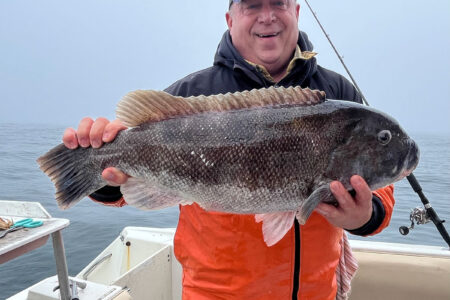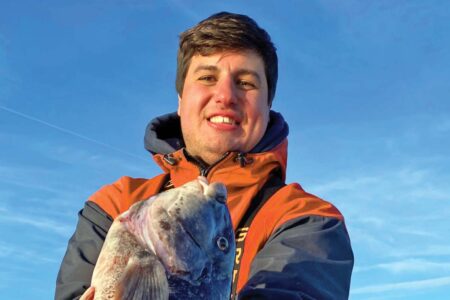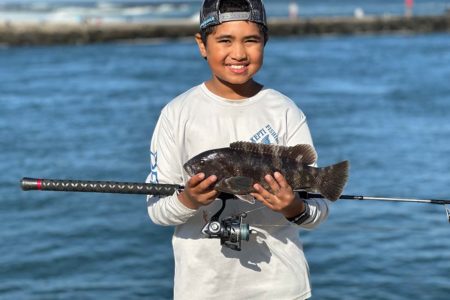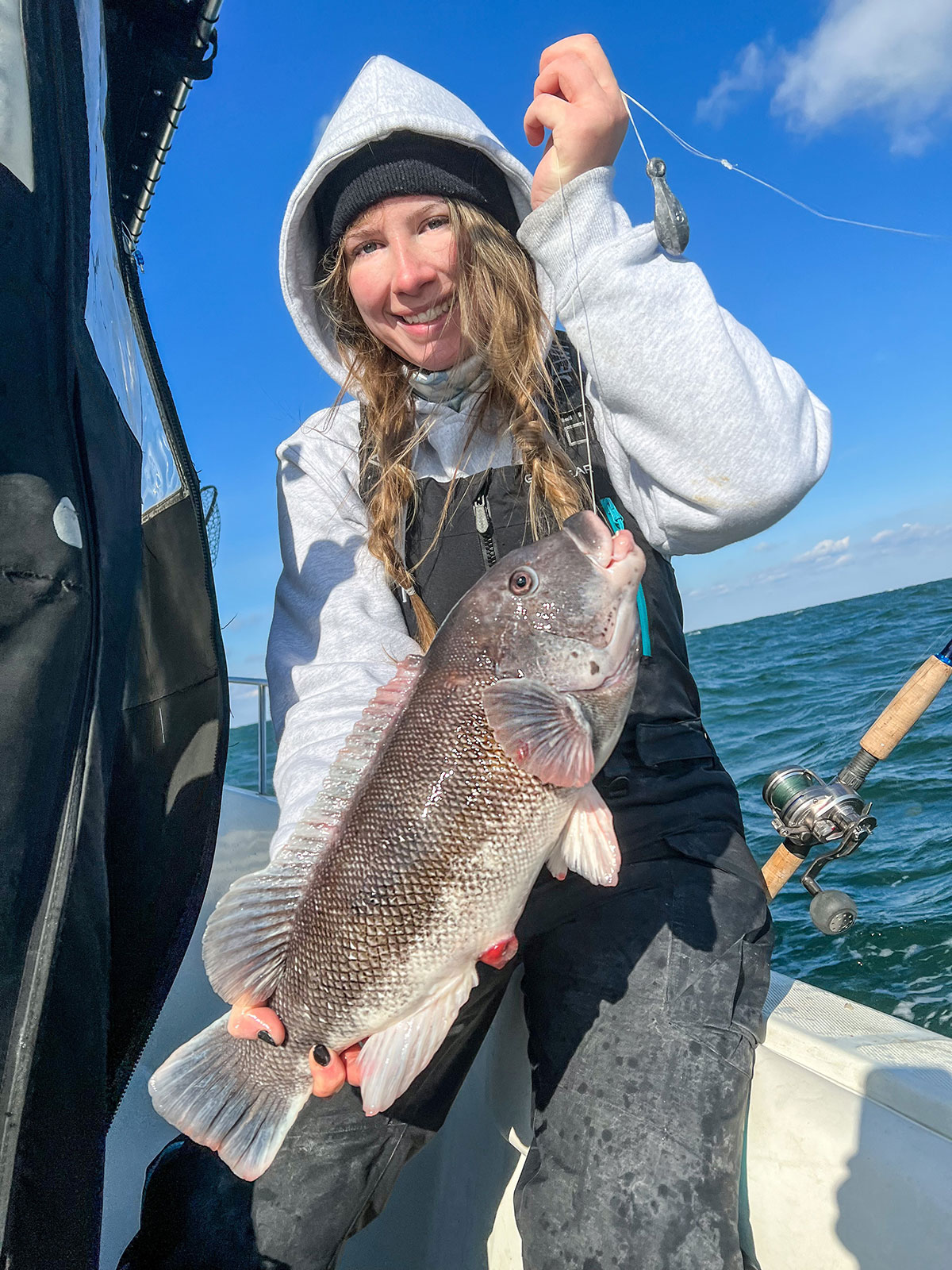
It’s not always how to catch blackfish, but how are the blackfish.
When it comes to saltwater fishing, my favorite species is the blackfish or tautog. You can’t beat freezing temps and icy eyelashes on the open ocean waiting for that scratchy bite that materializes into a heavy thump from one of these toothy tanks! Personally, I like to research species and learn as much as I can about them. This reflects upon my dreams of wanting to become a marine biologist, but I think it is also an important skill every fisherman should have, learning more about the species we target in order to pick up patterns on behaviors of said species.
As for the blackfish, I do have some concerns. At the time of writing this article, I am only 23 years old and would like to have plenty of time to keep fishing for my favorite species in the future, but the obvious advancements in fishing technology and gear, as well as the reflections upon scientific data, and one has to wonder if the concerns are growing more legitimate.
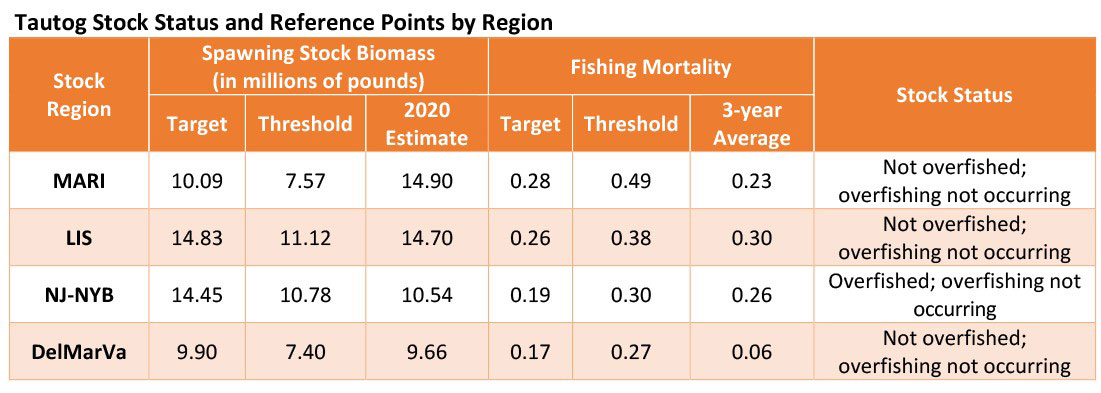
Biologically Speakng
If you have ever seen my Open Boat video series on The Fisherman’s YouTube channel and in our weekly video fishing forecasts, I do episodes on different species based on the seasons, including blackfish. This species of wrasse inhabits regions ranging from the Chesapeake to Cape Cod but can span from Nova Scotia to Georgia. They live on structure and can migrate based on the water temperatures and when they spawn. Adults migrate inshore during the months of April through July to spawn.
It takes 3 to 4 years for blackfish to mature and during this time they are relatively sized between 7 and 12 inches. During their April-July spawn season, females can produce a range of egg count based on size, a 1-pound blackfish can produce 30,000 whereas a 5-pound female can produce over 180,000 eggs per season. This is a major factor to consider when fishing for blackfish during the spawn season; New Jersey’s spring blackfish season will run from April 1-30 with a 15-inch minimum size and four fish bag; Delaware’s season is open now with a four fish bag limit and 16-inch minimum; if you’re fishing NY Bight, the New York limit is four fish at 16 inches from April 1-30.
The wise angler should consider releasing those heavy females. The final major factor to their biology is the fact that they are a slow growing fish, considered mature at only 7 inches meaning that a 20-pound blackfish can be around 30 years old. Almost at the end of their lifespan, blackfish can live up to 35 to 40 years of age.
Before I drop a Belmar rig 100 feet deep into the statistics, I’d like to share the importance of communication within the fishing industry reflecting on its past, present and future. Talking to my fishing elders on the subject of blackfish helps bring to light more concerns on the species. You get a lot of “back in my day” stories which can be very informative and educational. There was a time about 20 years ago, where blackfishing wasn’t driven by social media, so not that many people knew about it and if they did they were secretive about it. I’ve heard so many stories from my mentors about how you could anchor up on a wreck and be told you were going to catch a 13-pound blackfish and low and behold, you would get what you were promised.
There was also more of an abundance of fish, both size and quantity on these pieces being fished in years past. Talking to these guys now has lit that fire which inspired me to write this article because the amount of times I’ve heard them say “blackfishing is not like how it used to be” is concerning.
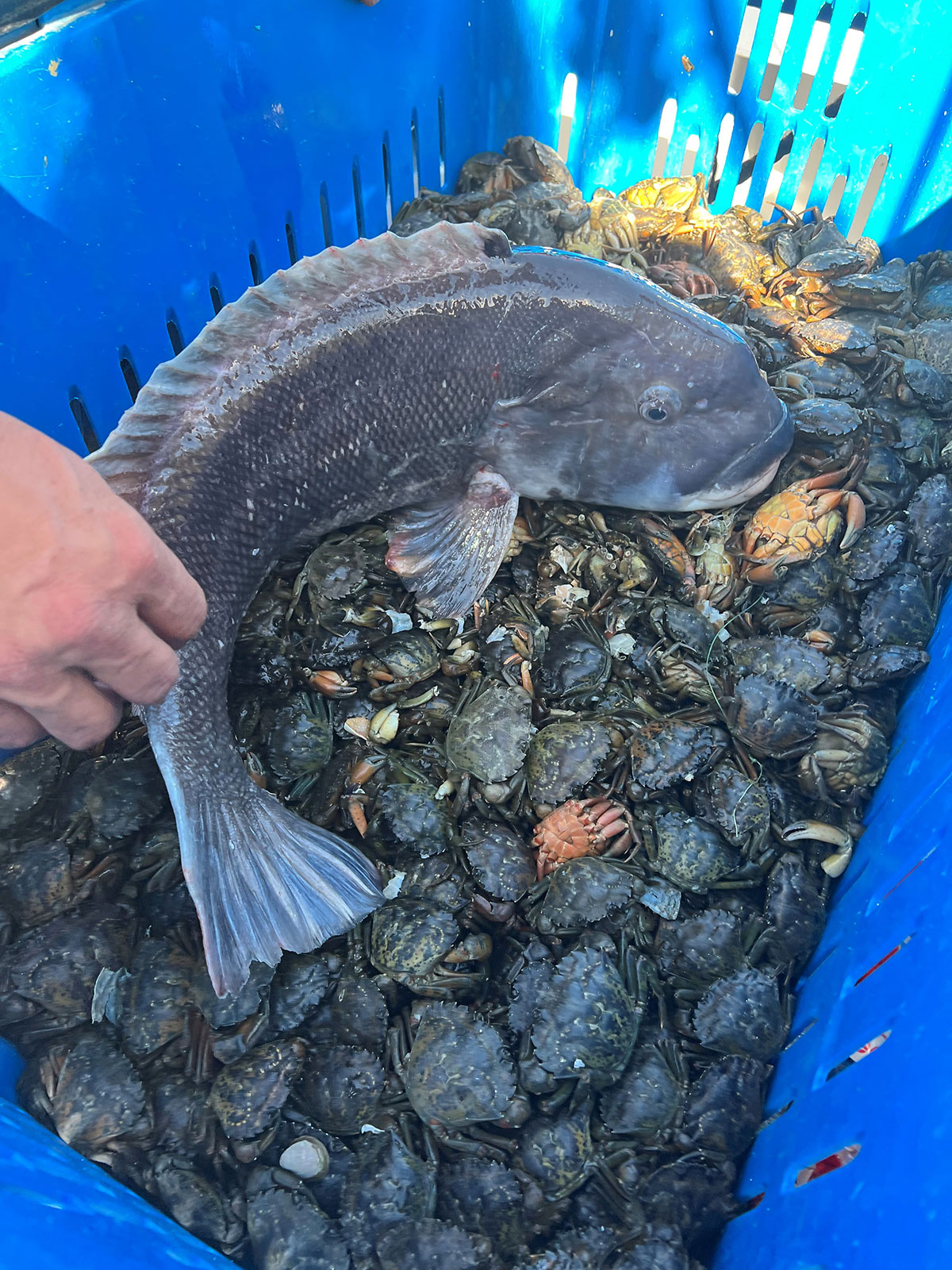
Stock Status
Blackfish are studied through regional assessments, independent tagging programs, and ultimately managed under a fishery management plan first implemented by the Atlantic States Marine Fisheries Commission (ASMFC) in 1996. Looking statistically at an ASMFC chart for “Tautog Stock Status and Reference Points by Region” this species is considered “overfished” in the NJ/NJ Bight region, though “overfishing not occurring.”
As far as other management regions – Massachusetts–Rhode Island (MARI), Long Island Sound (LIS), and Delaware– Maryland–Virginia (DelMarVa) – the tautog stock is considered neither overfished nor is overfishing occurring.
New Jersey Fish and Wildlife conducted their own research on the Ocean Trawl, an ocean stock surveying vessel where an otter trawl is used in which the sea life gets funneled into by the movement of the boat, the catch gets sorted into baskets, and later assessed when all of the data is collected. This data later gets used to determine the current population, increasing or decreasing, whether or not a species should be listed as threatened or even endangered, and can help set up fishing regulations in the future. With their research in relative abundance and biomass have been a variable since 1989.
Charts taken from the ASMFC show a high abundance period followed by a fluctuation in periods of decline and middling recoveries. According to the ASMFC, “While tautog are targeted by both commercial and recreational fisheries, over 90% of the total harvest comes from the recreational fishery, with a majority of landings occurring in state waters.” According to the ASMFC data, commercial landings in 2022 were approximately 541,950 pounds accounting for 6% of the total (commercial and recreational) coastwide harvest.
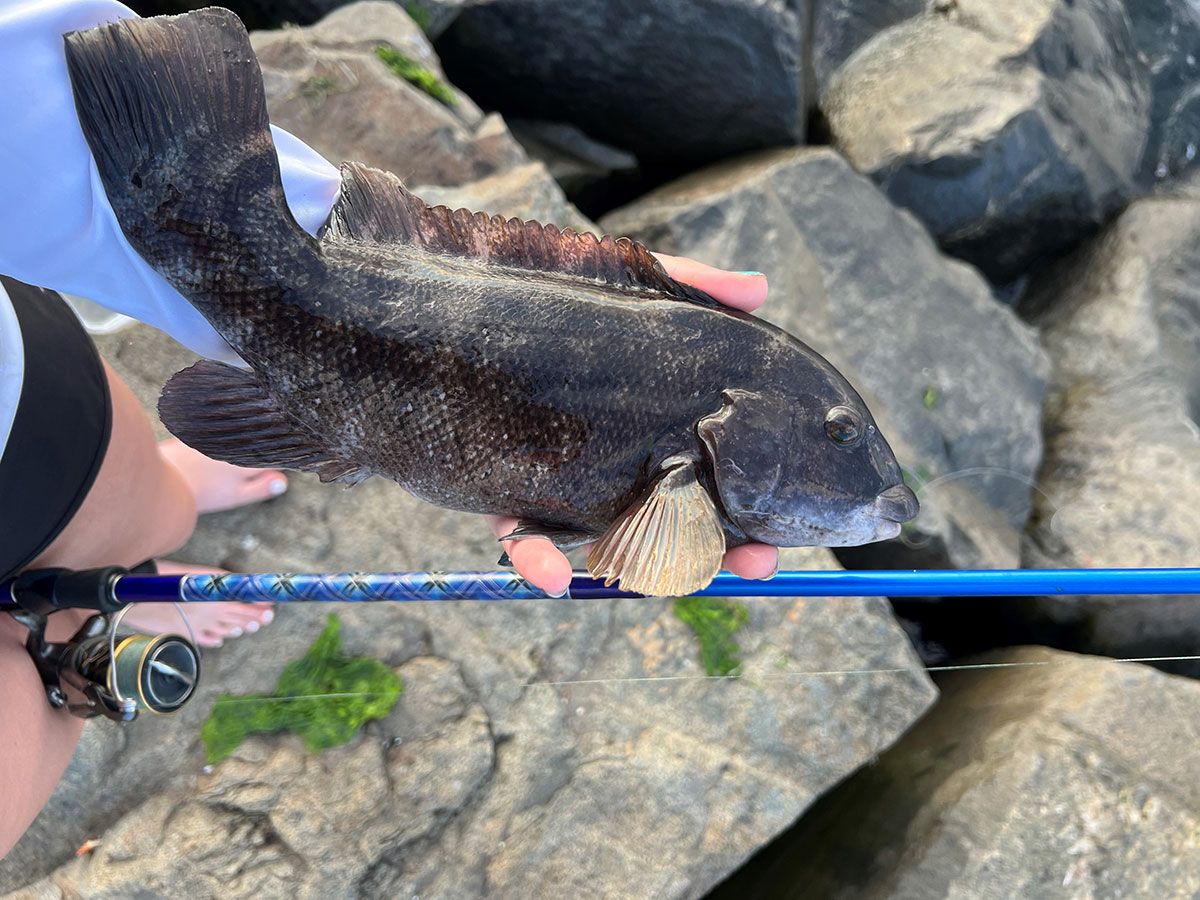
Off The Polls
Back in January I made a post on social media directing folks to a Google Survey that I set up to gather more public opinions on the subject of blackfish. Roughly 50 anglers from New Jersey participated in this Google Survey, from which I was able to gather information. I thank those of you who took the time to share your thoughts on the subject. Now let’s shed some light on those results.
When asked where folks whether they predominantly blackfished on land or by boat, 64% said boat while 36% were land-based. Out of all the seasons in which blackfish can be targeted, 48% took the majority vote for all of the above options reflecting on all the open blackfish seasons. The sample of respondents showed a 50/50 split is to fishing for-hire vs. private boat, but the party boat vote took the lead at 52%.
The next question honed in on the Spot Lock/anchor dropping debate, and 74% voted that when they blackfish, they do in fact drop anchor; this can be factored into the majority vote for those who fish on party boats but can be factored into those smaller private boats that keep the traditional of dropping anchor. I wanted anglers to reflect back on their last trip and report on the bite, providing plenty of choices from “lots of bites – small fish” to “slow bite – all big fish” with the majority voting that their last blackfish trip was the 33% vote of “slow bite – all small fish.”
Getting into the talks of the rules and regulations of blackfish, I posted the current regulations to refresh the survey takers’ memories and asked them if they liked the current regulations; 54% voted no, they do not like the current regulations. When asked the classic “Goldilocks” question in regards to the bag limit as being too much, just right, or too little, 55% of the sample said “too much” which was rather interesting. When asked to justify their answer, there were even more interesting responses:
“We don’t need to up the limits because people have gotten so efficient at catching them there won’t be any left if we allow too many to be taken during a single trip.”
“I like to base it off what an individual can eat/feed their direct family in one sitting. I would like to see the limit be three at most so that you can justify a family of three or four and you’re not ‘filling your freezer’”
| RIG VS. JIG |
| When it comes to blackfishing, there is always the great debate of rig fishing vs. jig fishing. Personally, I predominantly rig fish but there are times when the jig can get a lot more bites on a trip where the bite was basically dead fishing the traditional bait rigs. For me, the best time to use a rig is the late season deepwater fishing around January when those blackfish are moving offshore. A heavy rig combo that can handle those depths and a strong underwater current work best for this situation.
On the other hand, the jig works best in shallow water conditions but you have to be able to know what to do if there’s a strong underwater current. Before switching to a rig, have some patience and try pitching your jig up current and working the bite through that technique. Bring both a jig and a rig setup when you’re going blackfishing, get comfortable using both and learn the conditions to become a double threat out on the blackfish playing field. |
In doing this sample survey when I did, things were geared more towards the April season reopener in New Jersey, so I reminded anglers that prime time for blackfish to spawn is April through July, and that a 5-pound female can produce over 180,000 eggs. Prompted by this, 84% of the folks responding believed that the tautog fishery should not be open during the spawn, with respondents justifying their choice by saying to “reduce the pressure and let them spawn.”
When asked about the regulations, 76% of those responding to my survey felt blackfish regulations should be modified, with more than half of those surveyed saying they’d prefer “three fish at 15 inches with a closed spawn season.” In closing, one quote from the survey left a lasting impact, “We have one of the best tog fisheries around, they should be protected since it’s such a slow growing fish.”
Yes, New Jersey does have one of the best blackfish fisheries, and yes, conservation is a critical component of the future of this slow growing species.
Keep in mind this is a small sampling of anglers, and in no way does this mean that ASMFC or the New Jersey Fish and Wildlife should react in response to the survey; but personally, I do believe there’s more that can be done in this fishery, at least more acknowledgement of the importance of the tautog fishery at the Jersey Shore. That said, from a science and biology perspective, the next stock assessment update for tautog is scheduled for 2025, with a new full-scale benchmark stock assessment coming in 2028.

